
Mexico’s economic growth slows, outlook remains steady

September 29, 2021
Mexico’s gross domestic product (GDP) grew an annualized 6.0 percent in second quarter 2021. However, the monthly proxy for GDP decelerated in the third quarter. The consensus GDP growth forecast for 2021 (fourth quarter/fourth quarter), compiled by Banco de México, remained at 3.9 percent in August.[1]
Despite continued slowing in new cases, Mexico still faces headwinds from COVID-19. Vaccination progress has improved, but only 33 percent of the population has been fully vaccinated.
The latest data available show exports and employment grew, but the latter decelerated. Industrial production remained flat, and retail sales fell. The peso/U.S. dollar exchange rate remained largely unchanged, and inflation dropped in August.
Growth in economic activity wanes in recent months
Year-over-year growth in Mexico’s global economic activity index—the monthly proxy for GDP—slowed from 13.4 percent in June to 8.7 percent in July and to 6.7 percent in August (Chart 1). Service-related activities (including trade and transportation) grew 8.3 percent in August after growing 9.3 percent in July. Goods-producing industries (including manufacturing, construction and utilities) increased 4.1 percent in August after expanding 6.6 percent in July.
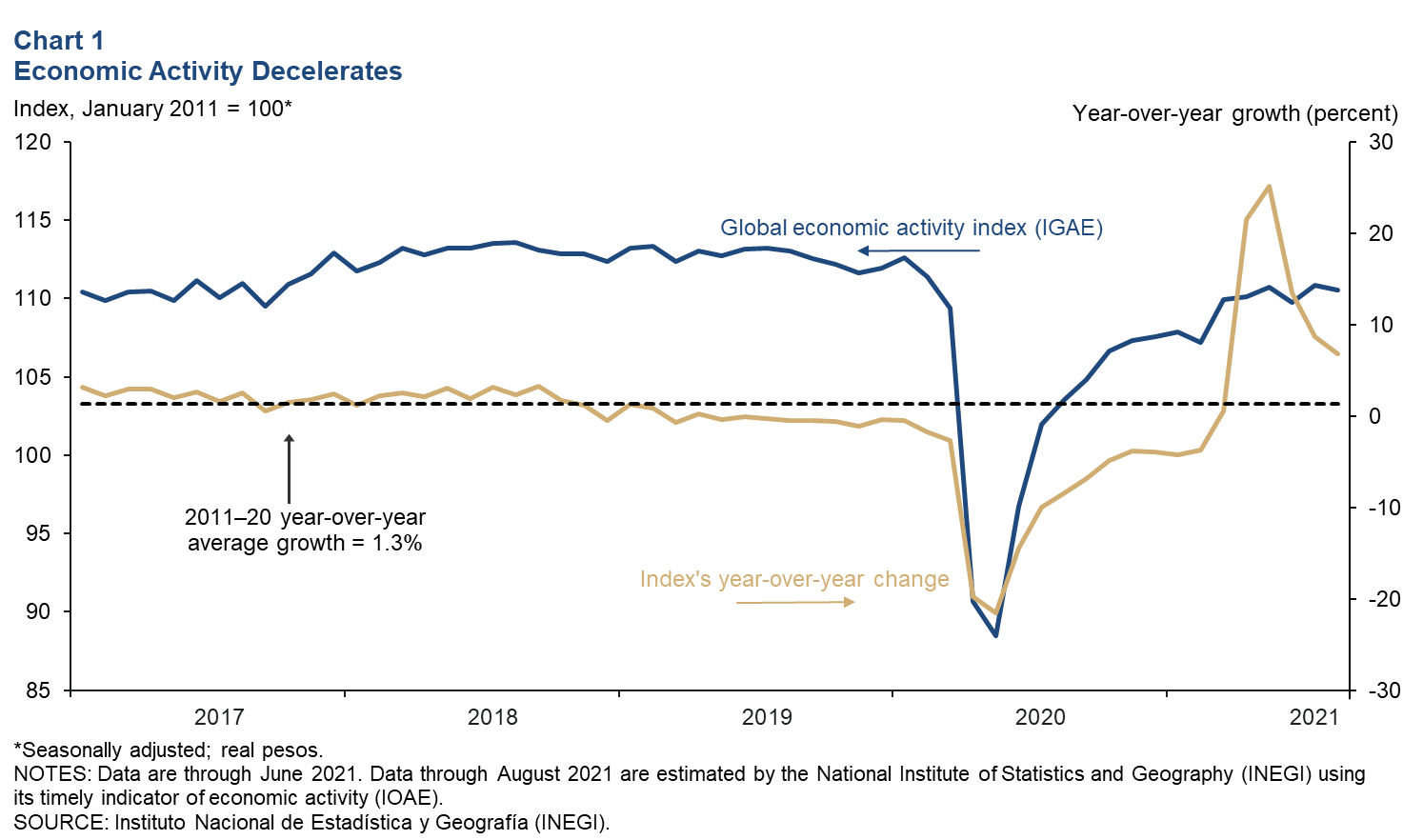
Exports marginally improve
The three-month moving average of total exports rose 0.4 percent in July, as oil exports increased 6.6 percent, and the dominant manufacturing category decreased 0.2 percent (Chart 2). On a month-over-month basis, total exports rose 1.0 percent in July, and manufacturing exports increased 1.4 percent. Mexico’s total monthly exports in July were up 3.3 percent compared with prepandemic levels in February 2020.
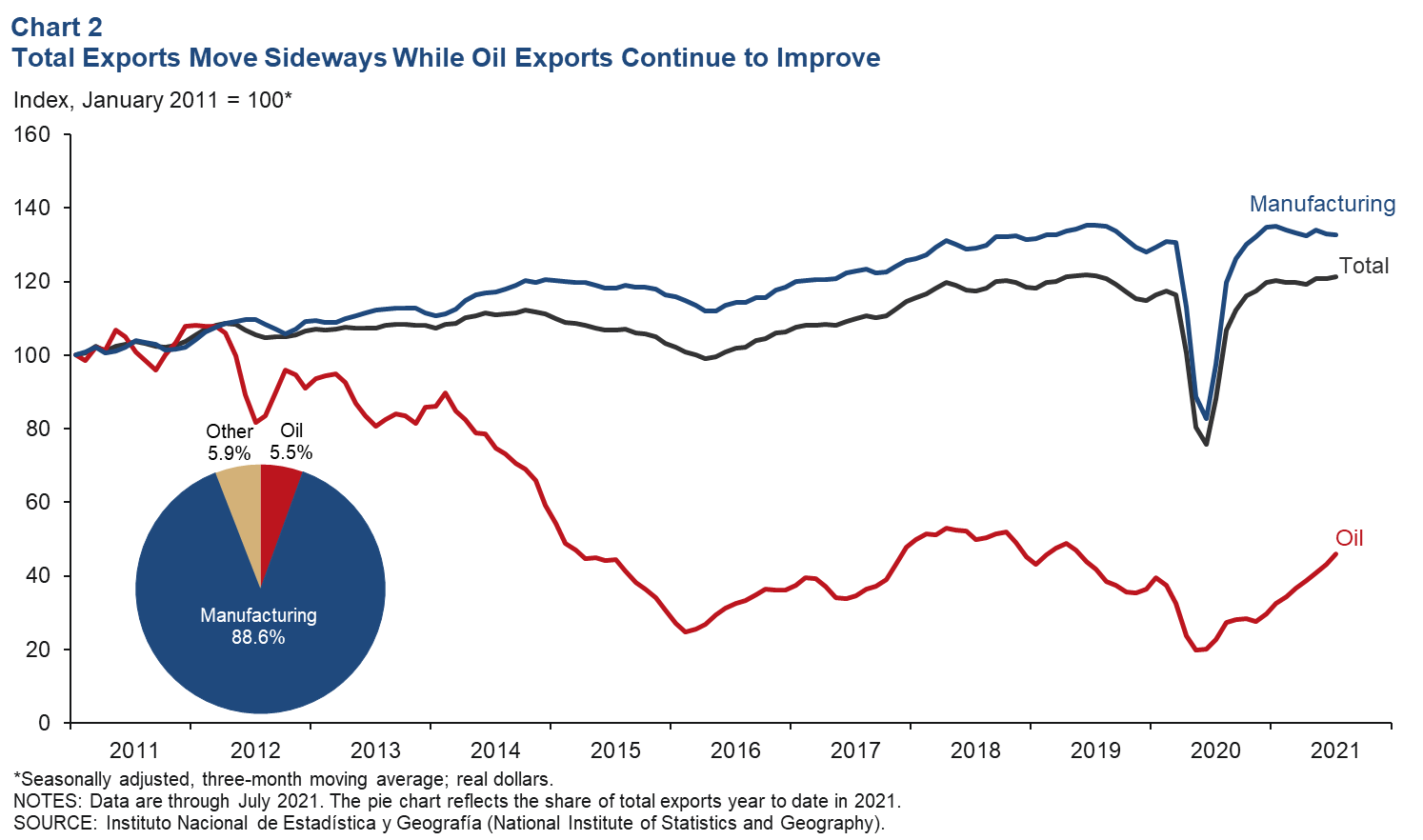
Industrial production steady
The three-month moving average of Mexico’s industrial production (IP) index—which includes manufacturing, construction, oil and gas extraction, and utilities—and manufacturing IP were largely unchanged (Chart 3). On a month-over-month basis, IP was up 1.1 percent in July, and the manufacturing index grew 1.4 percent. North of the border, U.S. IP increased 0.4 percent in August after rising 0.8 percent in July, and the three-month average was up 0.6 percent. The correlation between IP in Mexico and the U.S. increased considerably with the rise of intra-industry trade due to the 1994 North American Free Trade Agreement, recently replaced by the United States–Mexico–Canada Agreement.
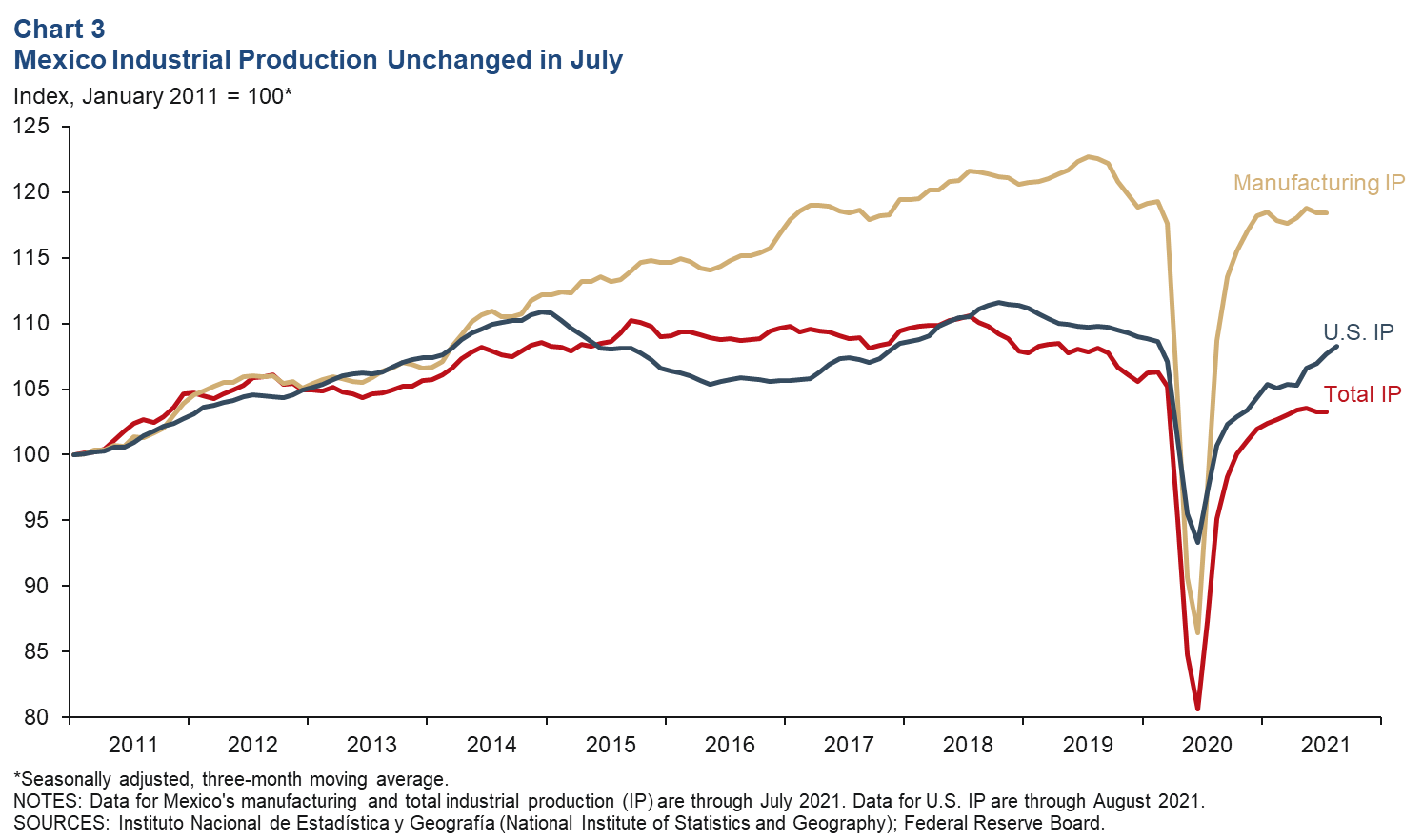
Retail sales fall
The index of real retail sales in Mexico decreased 0.2 percent based on a three-month moving average through June (Chart 4). On a month-over-month basis, retail sales fell 0.6 percent in June after rising 0.5 percent in May. Retail sales are 0.8 percent down from prepandemic levels in February 2020.
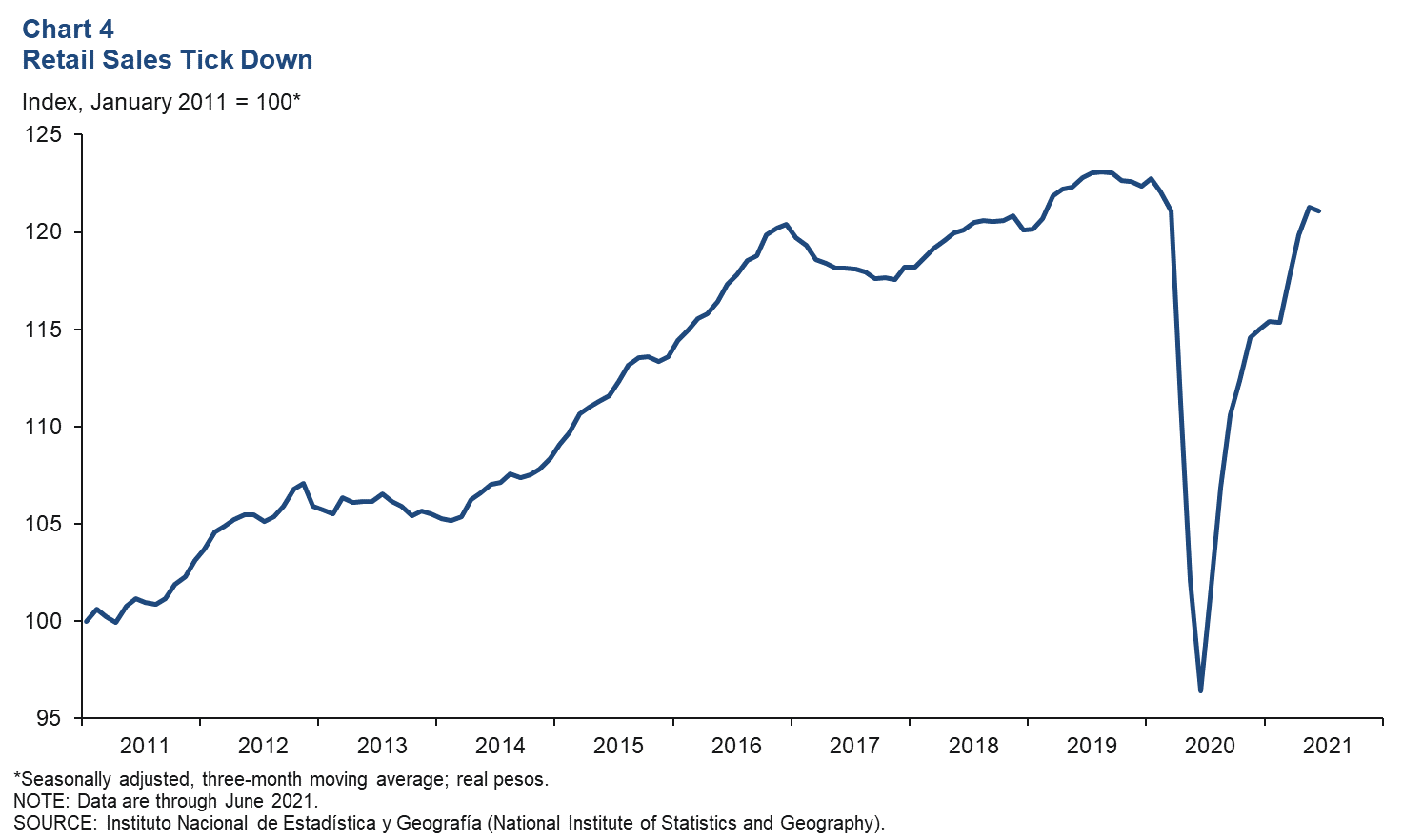
Payroll gains moderate
Formal sector employment—jobs with government benefits and pensions—rose an annualized 3.4 percent (57,000 jobs) in August, lower than July’s 7.9 percent increase (Chart 5). Year-over-year employment grew 4.3 percent in August. Total employment, representing 55 million workers and including informal sector jobs, increased 23.5 percent year over year in second quarter 2021. July’s unemployment rate was 4.1 percent, slightly higher than June’s 4.0 percent jobless rate.
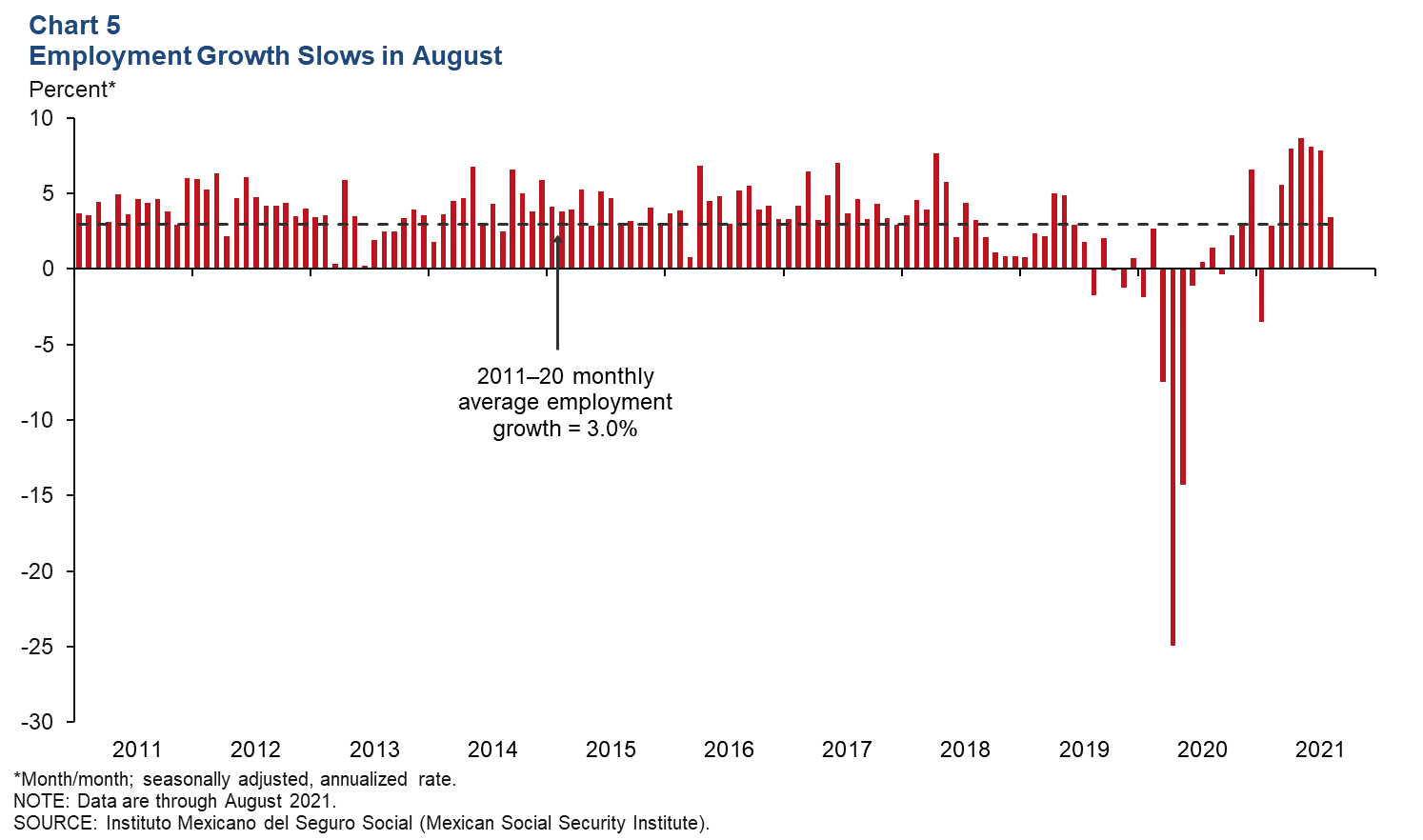
Peso remains stable
The Mexican currency averaged 20.1 pesos per dollar in August and averaged 20.0 pesos per dollar in the previous three months. However, the peso is still down 6.1 percent from the prepandemic level in February 2020 (Chart 6). The Mexican peso has been under pressure due to persistently higher average inflation in Mexico than in the U.S. and, more recently, increased uncertainty regarding the impact of COVID-19 on domestic and global growth.
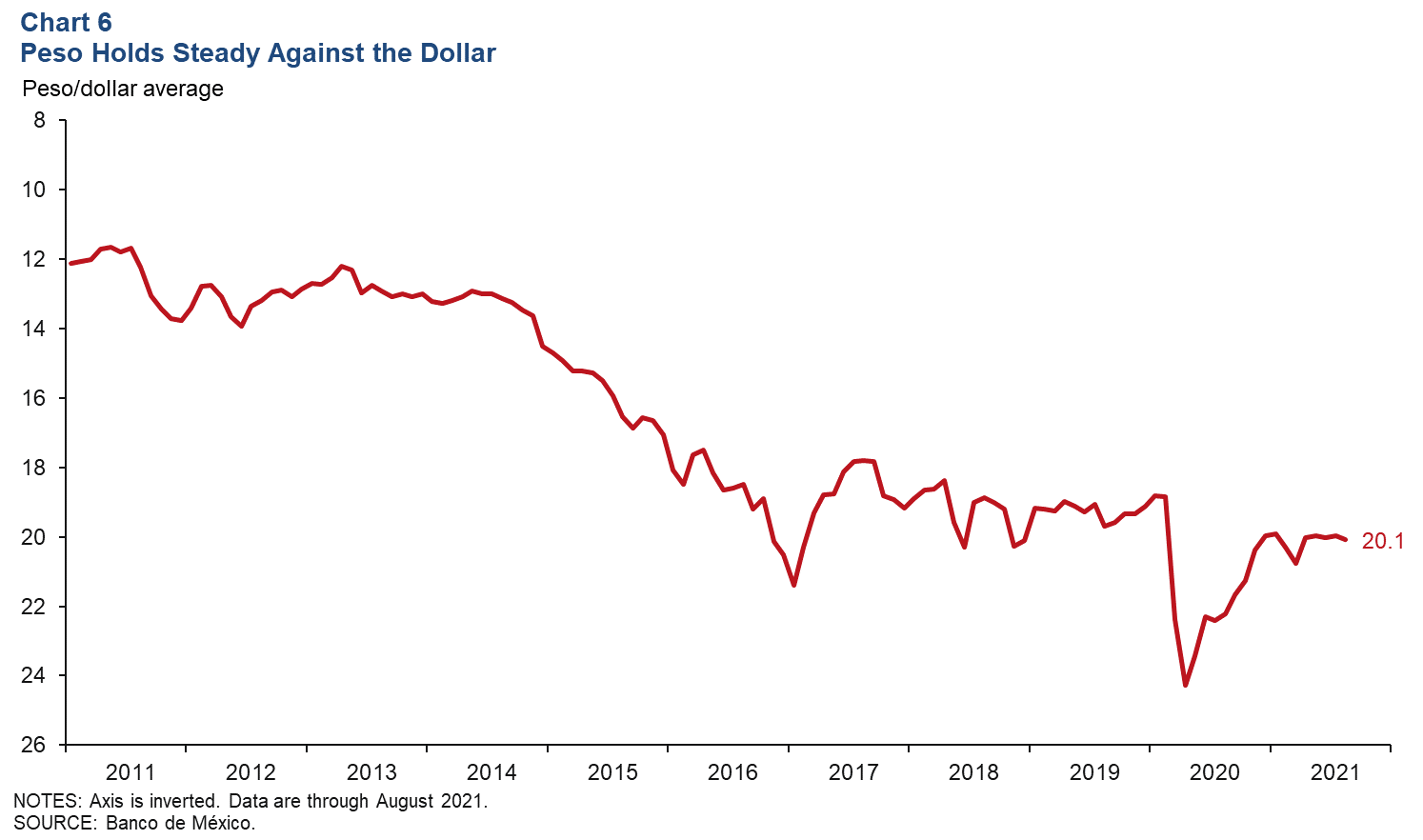
Foreign-owned fovernment debt share dips further
The share of foreign‐owned Mexican government securities fell to 18.5 percent in August, the lowest share since October 2010. The three-month moving average decreased to 19.1 percent (Chart 7). The extent of nonresident holdings of government debt is an indicator of Mexico’s exposure to international investors and a sign of confidence in the Mexican economy.
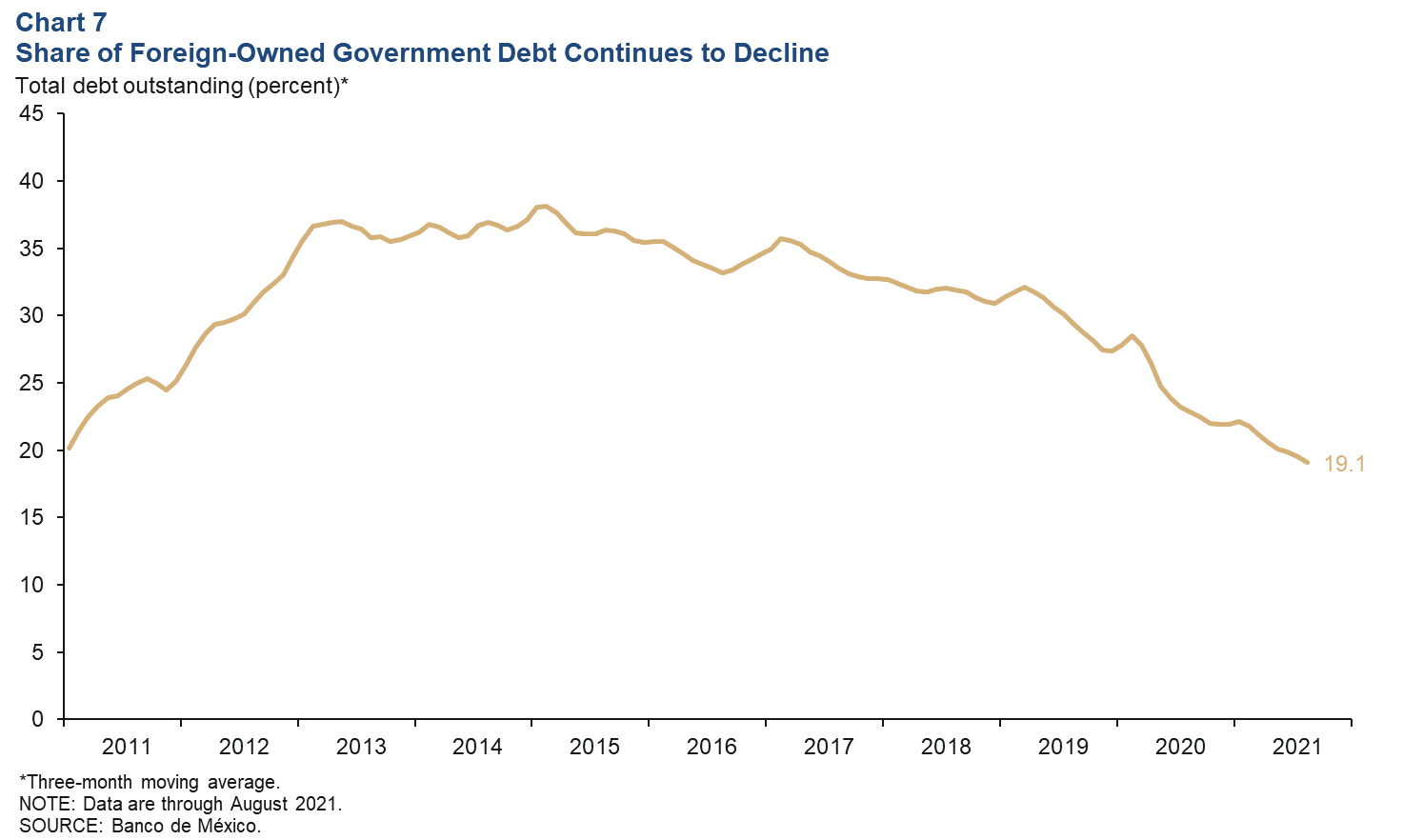
Inflation drops
Mexico’s consumer price index (CPI) increased 5.6 percent in August over the prior 12 months, growing at a slightly slower pace than July’s 5.8 percent (Chart 8). CPI core inflation (excluding food and energy) rose 4.8 percent in August over the previous 12 months. Banco de México increased the benchmark interest rate by 25 basis points to 4.5 percent on Aug. 14. In the public announcement accompanying the interest rate decision, the central bank cited inflation risks, including those created by constrained supply chains and the depreciated value of the peso.
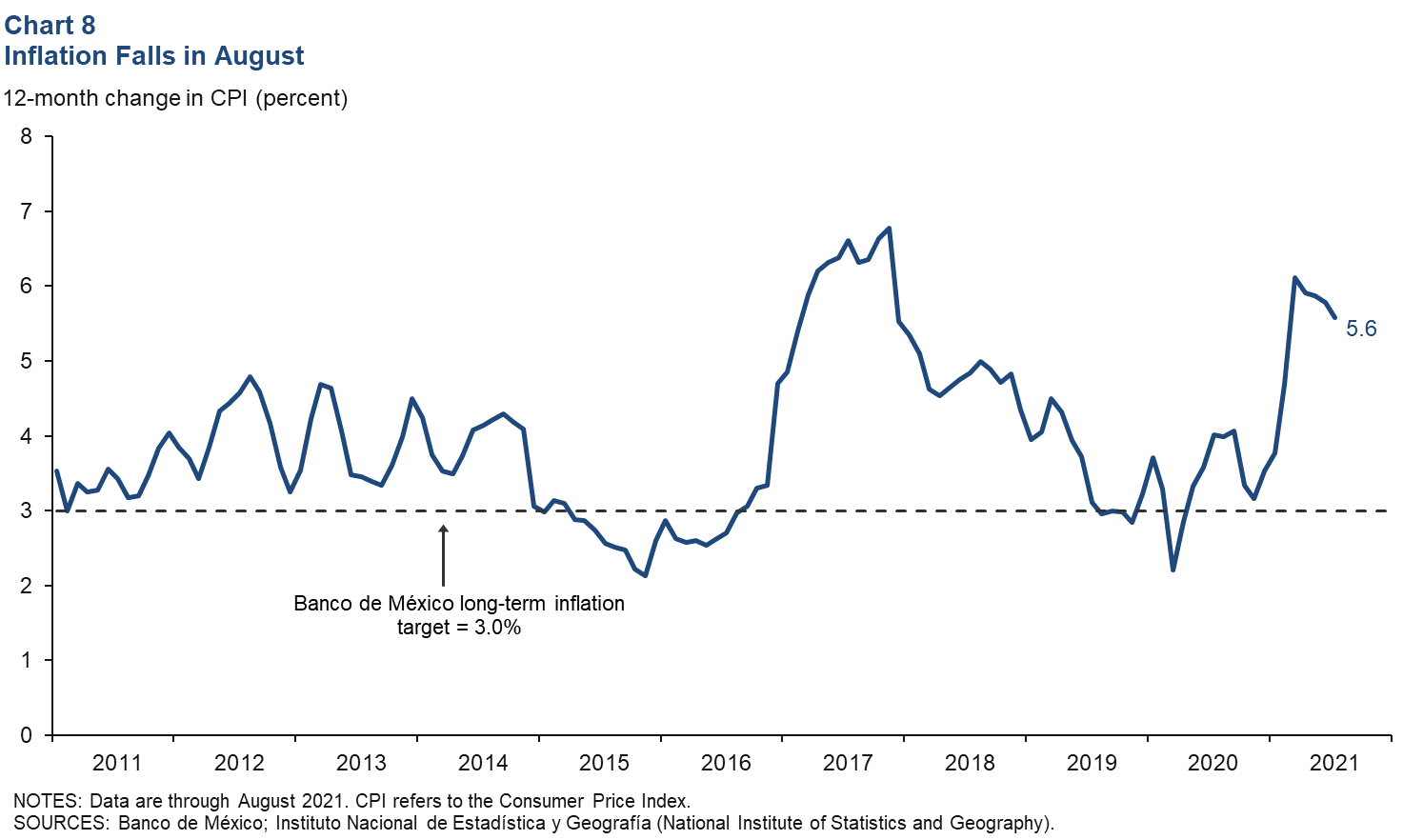
Notes
- GDP growth forecast based on the average year-over-year quarterly growth improved slightly from 6.1 percent to 6.2 percent. Encuesta sobre las Expectativas de los Especialistas en Economía del Sector Privado: Agosto de 2021, (communiqué on economic expectations, Banco de México, August 2021). The survey period was Aug. 20–30.
About the Authors
Cañas is a senior business economist, and Coia is a research analyst in the Research Department at the Federal Reserve Bank of Dallas.